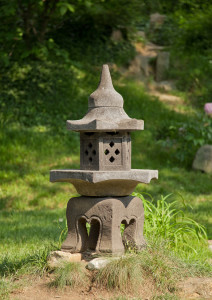 For those who want to know more about Reiki and energy healing or want to have a better idea about how the various forms of Reiki differ, I’ve written a series of posts, one for each form I practice or teach. This blog illustrates how I experience Traditional Usui Reiki, or what is also referred to as Eastern Reiki. It takes the point of view of the practitioner rather than the client.
For those who want to know more about Reiki and energy healing or want to have a better idea about how the various forms of Reiki differ, I’ve written a series of posts, one for each form I practice or teach. This blog illustrates how I experience Traditional Usui Reiki, or what is also referred to as Eastern Reiki. It takes the point of view of the practitioner rather than the client.
It’s important to point out right from the start that everyone perceives or experiences energy a bit differently. Therefore, consider this information to be a personal account and not an objective or more universal description.
Differentiating Eastern Reiki From Western Reiki
It’s helpful to start with just a very brief note on the difference between Eastern Usui (Traditional Usui) and Western Usui Reiki. Eastern Usui Reiki is more aligned with the past and current Japanese approaches. It emphasizes an individual’s commitment to healing and the personal development of an intuitive practice.
However, in the west, students of Traditional Usui Reiki are taught in a series of three short structured weekend classes. In Japan, the same training is acquired over a much more prolonged, individualized, and unfolding process and there is a greater focus on the mentoring relationship. Naturally, the end result is quite different.
Western Usui reflects how Mrs. Takata taught Usui Reiki in the US. I say “reflects” because there is some variation among the perceptions of the individual Western Usui teachers and practitioners who learned from her. But all Western Usui relies more on structure and form.
The Sense of Traditional Usui
Traditional and Western Usui Reiki feel the same to me (see my blogs on Western Usui Reiki and Usui/Tibetan Reiki). That’s not surprising, I guess. After all, they derive from the same Reiki system and they access the same energy. They just represent a different way to teach and practice with the same energy.
Usui Reiki – Traditional or Western – feels very light and like air. It’s like a soft breeze moving through my hands. Sometimes it’s a bit cool, sometimes it’s a bit warm. But, always the sensation in my hands is a subtle light breeze or movement. This can be compared to Sekhem Seichim Reiki (SSR), which is like cool water.
Traditional Usui Focus on Intuition:
To me, Traditional Usui Reiki is less structured in its practice and attunements than traditional Reiki. The practitioner places more emphasis on intentions than on actions. The distinction is slight, but in reality, it does boil down to a completely different experience as a practitioner or healer.
As a practitioner, I initially felt that I needed to reflect more when I practiced Traditional Usui Reiki as compared to Western Usui Reiki or Usui/Tibetan Reiki. That was uncomfortable at first. But now I’m accustomed to that, and I enjoy a greater sense of freedom and flow. I utilize my intuition more and I feel a sense of unspoken guidance.
There are several intuitive techniques unique to Traditional Usui Reiki, e.g., Reiji-ho, and Byosen Scanning among others. These techniques are sometimes taught in Western Usui Reiki classes, but I feel that technically they don’t belong in a Western Usui Reiki class.
How Traditional/Eastern Usui Compares to Other Types of Usui Reiki
In the end, most Reiki practitioners and energy practitioners, in general, tend to combine healing modalities in whatever way best serves their clients so all the boundaries blur in practice.
Remember, this is my personal experience. Others can perceive or experience Eastern or Traditional Reiki quite differently.
If you have questions about the different forms of Reiki, please see the website page on Reiki or contact me.
Updated July 23, 2022
